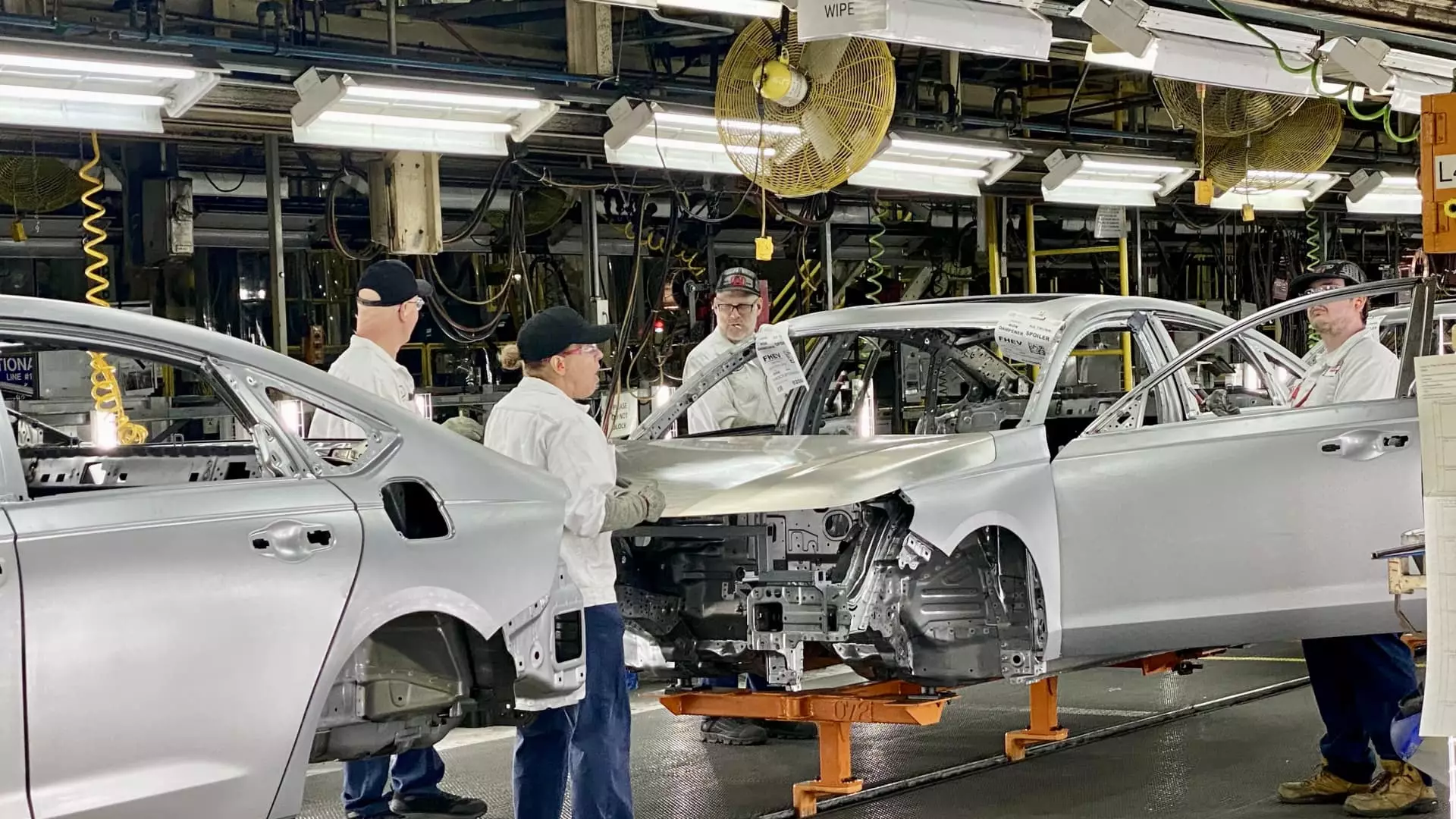As the global automotive industry increasingly pivots towards sustainable practices and electric mobility, Honda Motor Co. is making waves with its substantial reinvestment in Ohio, a state not traditionally known as a hub for groundbreaking automotive innovations. With over $1 billion in new investments, Honda aims to fortify its manufacturing capabilities in a landscape that is rapidly evolving. This follows a prior announcement of $700 million, underscoring the company’s commitment to enhancing its operations in the U.S. amid significant industry changes.
At the heart of these investments is the installation of six “giga presses,” machines initially popularized by Tesla, which will enable Honda to streamline the production of its electric vehicle (EV) battery cases. This shift in manufacturing strategy indicates a marked departure from Honda’s historical practices, where groundbreaking changes often originated in Japan before being globally implemented.
The new investments in Ohio will transform it into Honda’s flagship hub for EV manufacturing. The highlight includes a colossal $3.5 billion battery plant that is poised to play a pivotal role in Honda’s operational landscape, not just in North America but globally. Notably, the Marysville Auto Plant—where traditional gasoline vehicles were primarily assembled—will now integrate the production of hybrids and EVs on the same assembly line. This versatility is indicative of Honda’s forward-thinking approach, aiming to enhance efficiency while catering to the ever-growing demand for electric vehicles.
Mike Fischer, North America’s leader for Honda’s battery-electric vehicle projects, articulated the significance of this transition, stating that Ohio will “establish the global standard for EV production.” This ambition is part of a broader trend where manufacturers are racing to innovate not just in product offerings, but also in the underlying processes and technologies that drive production.
Historically, Honda’s transformative manufacturing processes often began in Japan. However, the decision to advance these operations in Ohio reflects a strategic responsiveness to both market demands and potential political landscapes, particularly in light of a potential increase in tariffs on imported automobiles. The current administration’s focus on on-shoring manufacturing aligns with Honda’s plans, making Ohio an increasingly relevant location for the company’s future endeavors.
With an impressive production capacity of approximately 220,000 vehicles annually at its Marysville facility, Honda is adamantly positioning itself to meet the shifting dynamics of vehicle sales in the U.S. market. A substantial portion of vehicles produced will be sold domestically, while the remainder will cater to export demands. This blended approach not only strengthens Honda’s market position but also enhances its competitive edge amid increasing global trade tensions.
Innovative Manufacturing Techniques
One of the standout features of Honda’s revamped operations is the implementation of a new manufacturing design that utilizes nearly 60 flexible “cells” for battery assembly. This modernized production paradigm departs from the conventional assembly line, favorably allowing processes to occur simultaneously without disrupting overall workflow. In this setup, any potential slowdowns can be isolated, which minimizes disruptions that often hinder large-scale automotive production.
Additionally, the deployment of high-pressure die-cast machines positions Honda to exploit economies of scale, with the ability to produce complex parts in single modules. This innovation is expected to significantly reduce manufacturing costs while enhancing the quality and efficiency of production—a move that could redefine Honda’s positioning in the competitive EV landscape.
Commitment to Sustainability
Honda has unabashedly embraced sustainability as a core tenet of its business strategy. The company aims to achieve zero environmental impact by 2050, outlining critical goals, including carbon neutrality and resource circulation. Emphasizing clean energy production, Honda plans to transition wholly toward zero-emissions vehicles by 2040—an ambitious target that sets it apart from many of its contemporaries who have retracted similar commitments.
Honda’s emphasis on using recyclable materials, such as a specialized form of structural aluminum for battery packs, demonstrates a proactive approach to reducing waste and environmental impact. By fostering innovation and sustainability, Honda aspires to lead by example in an industry increasingly scrutinized for its ecological footprint.
As Honda embarks on this transformative journey, it is clear that the stakes are high. With the automotive industry on the cusp of a significant rearrangement propelled by the surge of electric mobility, Honda’s strategic decisions today will shape its trajectory for decades to come. The company’s commitment to Ohio not only fortifies its manufacturing backbone but also signals its readiness to adapt and thrive in a rapidly changing marketplace. The world will be watching as Honda endeavors to not only meet but exceed the expectations inherent in the new age of automotive manufacturing.

